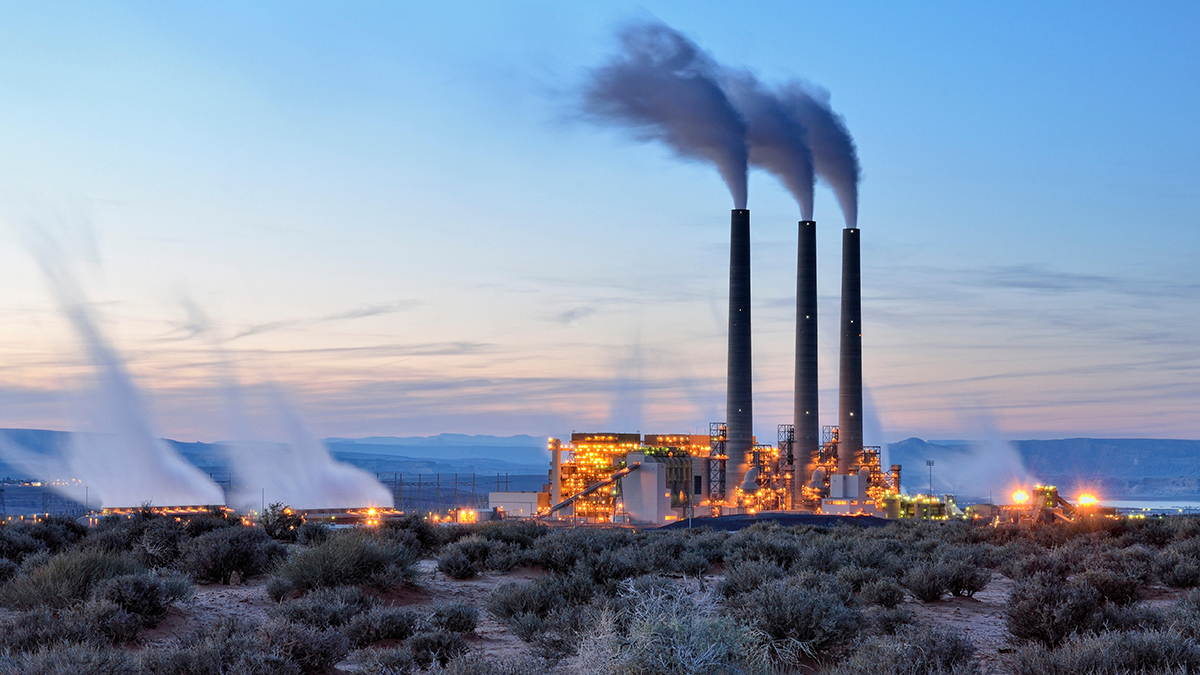Climate risk is more than a weather forecast
Broker's chief science officer stresses climate risk is not a linear concept
Above all the noise about climate risk, re/insurers should be a voice of clarity, says Steve Bowen from Gallagher Re
Re/insurers should avoid confusing climate and weather when they analyse the risks linked to climate change, says Steve Bowen, chief science officer at Gallagher Re.
 Steve Bowen, chief science officer, Gallagher Re
Steve Bowen, chief science officer, Gallagher Re
With a scientific background in meteorology and business analytics, Bowen leads the broker’s climate and environmental, social and governance (CESG) division and works with the Gallagher Research Centre (GRC) and Gallagher’s global catastrophe analytics and the public sector and climate resilience groups. The GRC, which launched last year, works directly with academic or other partners on developing and accessing independent peer-reviewed research related to both natural and man-made perils.
While weather clearly refers to short-term and current conditions, such as temperature and rainfall, and climate is the average of those conditions over a longer period, Bowen says the key when searching for clues as to how the climate is changing over time is what meteorologists call “climate normals”. These are 30-year averages updated every decade that show how weather patterns are evolving. The latest update was in 2021, since the most recent average is for 1991 to 2020.
Increasing intensity
He says: “Most parts of the world have seen an evolution towards atmospheric and oceanic warming, which is leading to increased intensity of how weather events behave. When we determine the delta between extreme weather events and ‘normal’, we can see the hallmarks of climate change emerge. As the behavioural intensity becomes more obvious, we can quantify the extent and impact a changing climate is having on individual weather events.”
Climate change does not necessarily cause weather events to happen but, rather, it influences how and when they occur.
Bowen says: “We’ve always seen heatwaves and strong hurricanes, but climate change is adding energy and influence that cause those events to be more extreme than in the past. To use a baseball analogy: an extreme weather event is a home run hitter, but climate change is that same player on steroids hitting more frequent and further-travelling home runs.”
This illustrates the “blend” of changes in science and hazard behaviour.
“Population migration patterns and housing unit density show humans are inherently attracted to risk, such as by living close to coastlines, along riverbeds or in the wildland-urban interface or intermix. These areas are where we are expecting to see more influence from climate extremes. Blending those factors increases the potential for greater catastrophe losses than we are currently seeing,” Bowen says.
Primary versus secondary perils
Descriptions of primary and secondary perils typically define the latter as being a less important occurrence. The reality, Bowen says, is over the past 50-plus years the inherent higher frequency of secondary peril events often adds up to a higher annual cost than primary perils. The high frequency of events in combination with growing volumes of exposed property in high-risk areas is why, he adds, losses from severe convective storms, for example, have accelerated.
“What’s needed is an assessment of hazard change plus population exposure change because as climate risk increases, it has a greater potential impact on life and property. Unfortunately, the most vulnerable people in our society tend to be the ones who are most exposed to climate risk because they have the least means to be able to protect themselves from increased weather intensity,” he says.
“If someone lives in a flood zone, the likelihood of a one-in-100-year event within the 30-year period of a standard mortgage is statistically 26% and so it’s important to talk at a probabilistic level to more clearly explain how climate risk is accelerating with time”
Steve Bowen
Gallagher Re
“An important point is we know building codes work. These can not only limit damage potential, but also save lives. How we provide an equitable opportunity to ensure everyone has a chance to protect their homes and livelihoods is a key next step in climate adaptation preparedness,” he adds.
Re/insurance pricing is typically underwritten using catastrophe models that are based on historical events and data, but this approach is not always appropriate in the context of climate change.
“What we considered 20 years ago to be a one-in-100-year event is now very likely to be closer to being a one-in-75 or a one-in-50-year event. The whole concept of a return period event is not only changing but is accelerating from a hazard behaviour and resultant loss perspective as climate impacts become more apparent,” Bowen says.
Re/insurers need to communicate this development to their customers, who may not understand how probability works in stochastic analysis.
Bowen says: “If someone experiences a one-in-100-year event, it does not mean the clock has been reset and they shouldn’t expect such an event to recur for another 100 years. If someone lives in a flood zone, the likelihood of a one-in-100-year event within the 30-year period during the lifespan of a standard mortgage is statistically 26% and so it’s important to talk at a probabilistic level to more clearly explain how climate risk is accelerating with time.”
This dialogue is particularly important, Bowen adds, given regulators and rating agencies are starting to score companies in terms of how well they are preparing for future climate risk, and the increased financial impacts associated with it.
Evolving models
Catastrophe models need to evolve with climate risk. “Catastrophe modelling is not a perfect science, but it’s still the best option re/insurers currently have to quantify risk. When it comes to future risk, these models will need to be recalibrated using a variety of different environmental scenarios while also making some pretty significant assumptions beyond just changes to event behaviour – for example, guessing what a company’s future portfolio may look like, what public policies may be implemented or what building code requirements may exist,” Bowen says.
“The biggest challenge, though, is going to be how re/insurers communicate uncertainty with their clients because the reality is the global climate model output being used to create these scenarios is far from absolute or guaranteed.”
That is because there are still “significant pockets” of the world – in Africa, Latin America and south-east Asia – where data availability or quality is not good enough.
Bowen says: “A lot of data used to model climate change is gleaned from satellites rather than on-the-ground observations in areas where there is minimal funding or resources available to take regular weather station observations. From the humanitarian standpoint, there exists a significant opportunity to bring insurance products to underserved markets that can help people have some financial protection in the face of these disasters.”
Bowen works across Gallagher Re teams on modelling, policy, underwriting, public sector outreach and sourcing capital. “My role is to put a spotlight on the science and the research and turn it into translatable action in terms of how we can help our clients and stakeholders,” he says.
Communication is an essential part of his role, to which he brings his previous experience in broadcast television.
Real-world implications
He says: “We have the tools and datasets available to deliver clear messages to the media of the real-world implications to what emerging science is suggesting may happen. And the media has an important role to play in sharing accurate and truthful accounts to broad audiences of what current and future climate risk means to you and I as individuals.
“There’s so much noise out there on this topic and you want to be a voice of clarity. You do not want to scream a message of doom that makes people feel like there is no chance to make a meaningful difference in the fight against global warming. We still have time, but we do need to talk about the urgency of the situation. This includes helping companies transition their portfolios towards established net-zero commitments, providing advice on reducing a dependency on a dominant book of fossil-fuel assets, supporting them in understanding how to meet the growing volume of international climate disclosure requirements and understanding the importance of ESG scoring and the role of carbon markets.”
New product development from Gallagher Re’s CESG Centre of Excellence has led to the creation of a carbon portfolio benchmarking tool and a liability risk scenario modelling technique to help companies better account for potential challenges that may reduce their chances of meeting their own defined climate goals.
All this work illustrates, Bowen stresses, that climate risk is not a linear concept.
“For each peril there will be differences between every territory of the world, but we need to do a better job in helping people understand what tomorrow’s climate risk actually looks like for them.”




